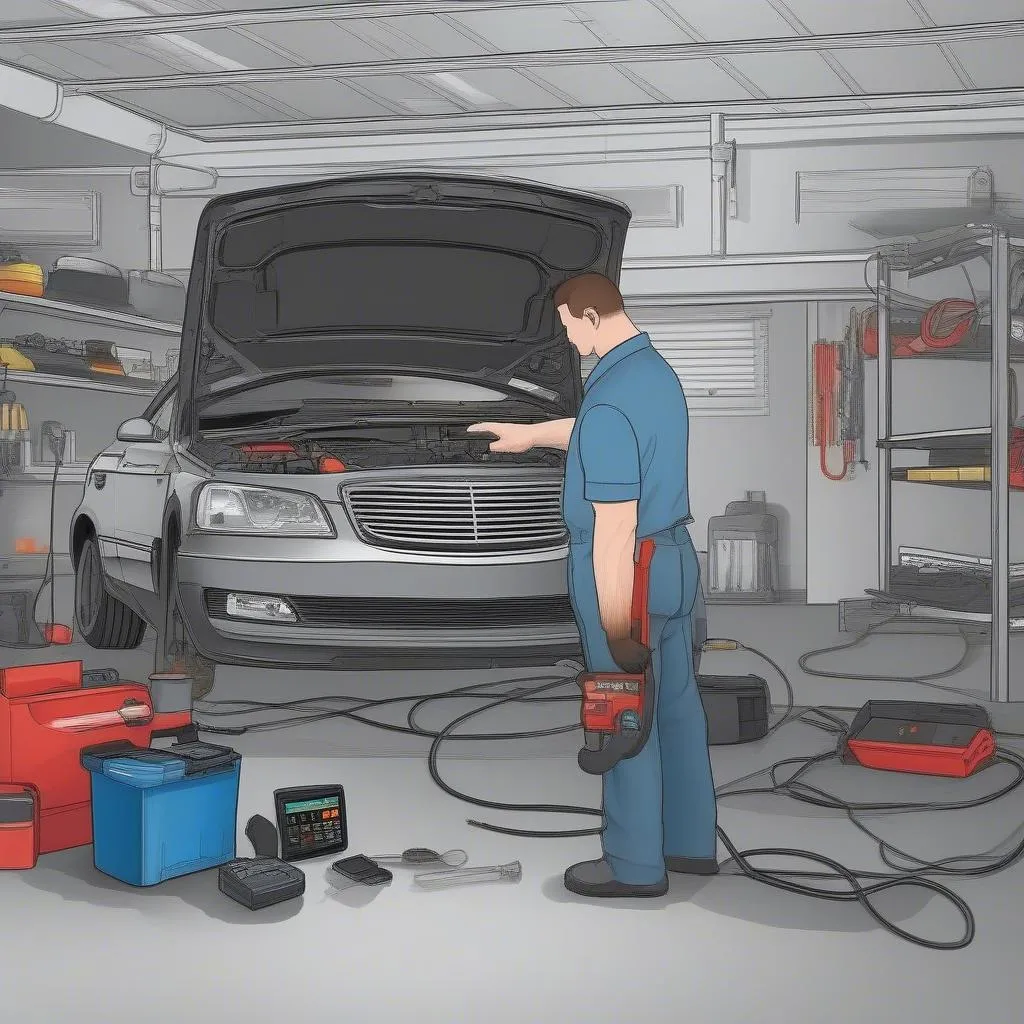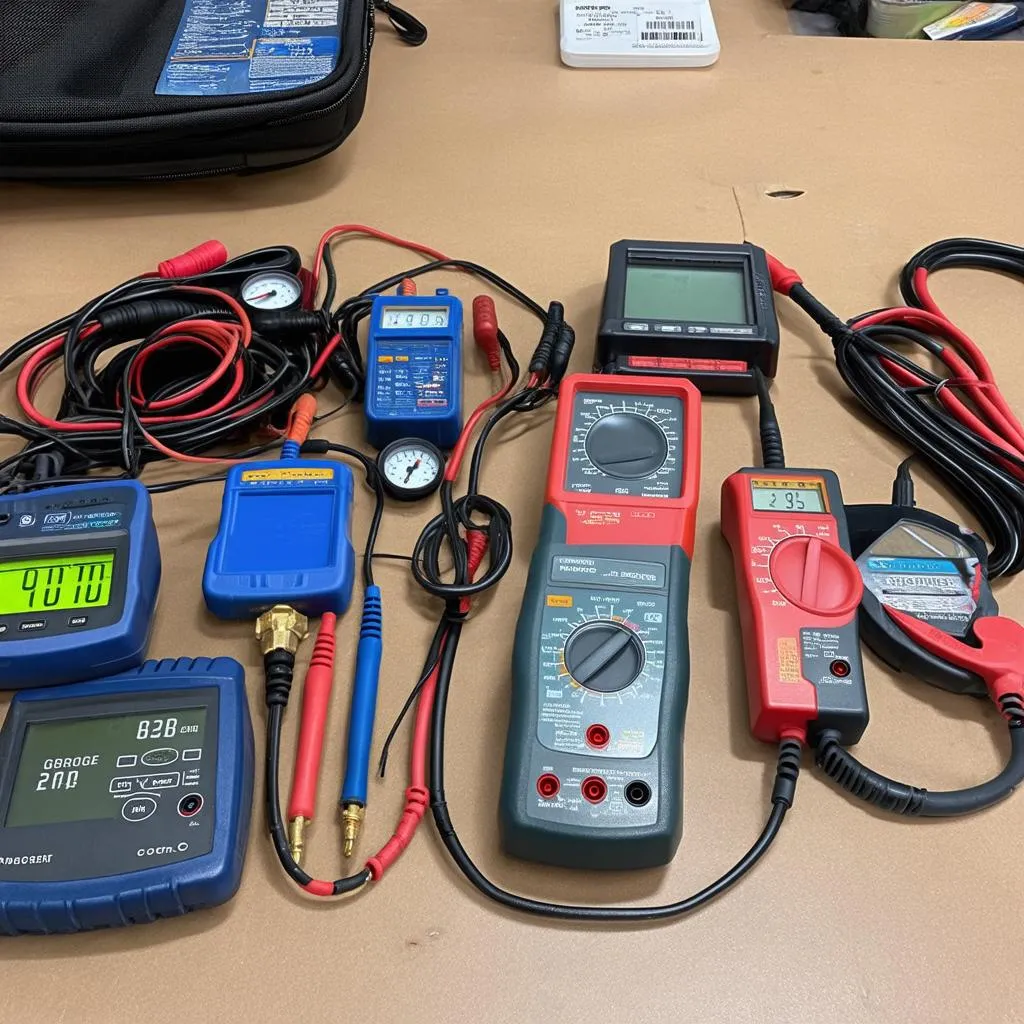The automotive world is teeming with cryptic codes and technical jargon that can leave even seasoned mechanics scratching their heads. One such code, “1060627 b2000 vcds”, often pops up in online forums and discussions, raising questions about its meaning and relevance. While this specific string doesn’t directly correspond to a standardized diagnostic trouble code (DTC) or a recognized software version, it likely points towards a user’s attempt to troubleshoot a vehicle issue using the VCDS software, particularly with a component coded “b2000.”
Deciphering the Code and its Context
To understand why a user might search for “1060627 b2000 vcds,” let’s break it down:
- 1060627: This numerical string probably represents a unique identifier, perhaps a forum post ID, a user ID, or even a specific data point within a log file. Without further context, it’s difficult to pinpoint its exact meaning.
- b2000: This hexadecimal code could indicate a module address, a component identifier, or a specific data value within the vehicle’s network. It’s often associated with transmission control modules (TCMs) or body control modules (BCMs), but its exact interpretation depends on the vehicle’s make and model.
- vcds: This acronym stands for “VAG-COM Diagnostic System,” a widely used diagnostic software suite for vehicles from the Volkswagen Audi Group (VAG). Mechanics and enthusiasts alike use VCDS to access, read, and clear DTCs, monitor live data streams, and perform various adaptations and coding procedures.
Putting it all together, someone searching for “1060627 b2000 vcds” is likely encountering an issue with their VAG vehicle, possibly related to a component identified by “b2000,” and is seeking guidance or solutions within the context of using the VCDS software.
 Car Diagnostic Software
Car Diagnostic Software
Common Scenarios and User Queries
Here are some potential scenarios that could lead a user to search for this combination of terms:
- Troubleshooting a Transmission Fault: A user might be experiencing shifting problems, error messages, or limp-home mode activation. They may have extracted a fault code containing “b2000” from the TCM using VCDS and are now searching for solutions or interpretations.
- Diagnosing a Body Control Module Issue: The “b2000” code could be related to issues with the BCM, such as malfunctioning central locking, power windows, or lighting systems. The user might be using VCDS to scan for DTCs, monitor live data from the BCM, or attempt coding modifications.
- Seeking Information on a Specific Forum Thread or Online Resource: The numerical string “1060627” might correspond to a forum post or an article where a user previously discussed a similar issue involving “b2000” and VCDS.
 Mechanic Using Diagnostic Tool
Mechanic Using Diagnostic Tool
Navigating Automotive Diagnostics with Confidence
While “1060627 b2000 vcds” might appear cryptic at first glance, understanding its potential context helps illustrate how users rely on specific terms and software tools when diagnosing and resolving vehicle issues.
“It’s crucial to approach automotive diagnostics systematically,” says automotive electronics expert Dr. Sarah Williams, author of “Advanced Automotive Electronics and Control Systems.” “Begin by identifying the specific symptoms, gather relevant fault codes, and consult reliable resources like factory repair manuals and reputable online communities.”
The Power of VCDS and Expert Support
VCDS empowers users to delve deeper into their vehicles’ electronic systems. However, interpreting data and making informed decisions often requires experience and expertise.
Remember, when facing complex automotive issues, seeking assistance from qualified technicians and leveraging the collective knowledge of online communities can prove invaluable in getting your vehicle back on the road safely and efficiently.
Need further assistance with your vehicle diagnostics or CARDIAGTECH products? Contact us today! We’re here to help you navigate the intricacies of automotive technology.


